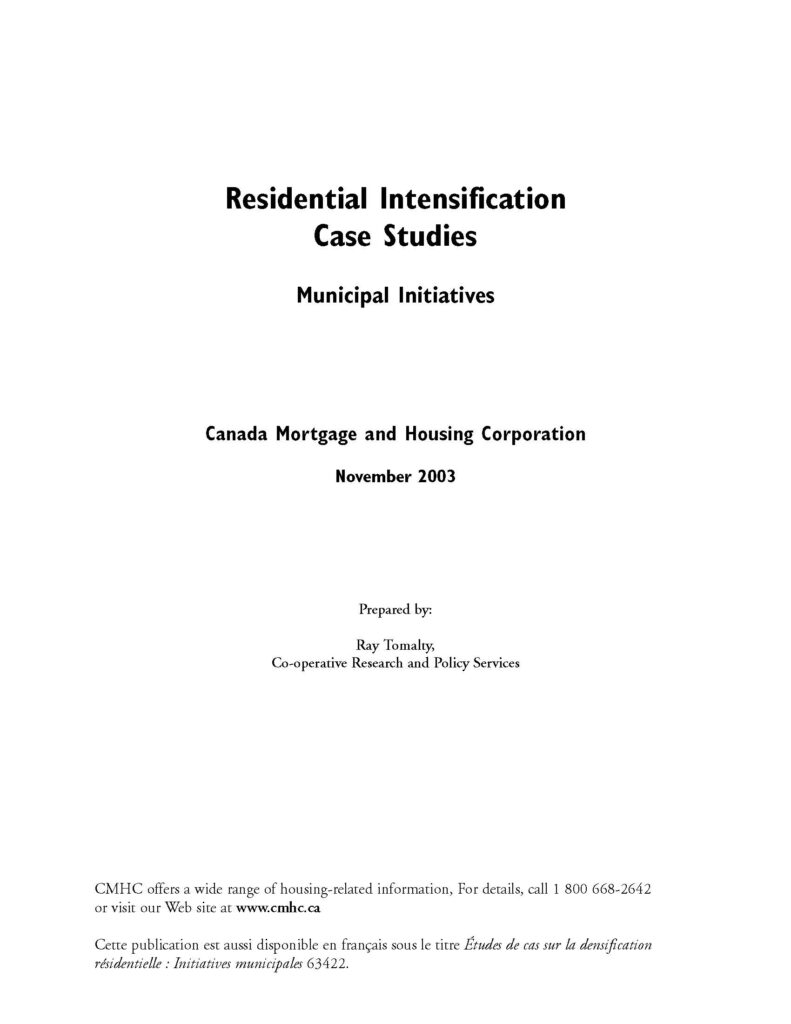This CHMC study investigates successful examples of regulatory, planning, and financial initiatives at the municipal level that have helped to overcome obstacles to infill development (including contaminated sites grants, accessory apartment development, and development fee exemption programs).
Each initiative highlights local stakeholders’ responses, the impact of the program on local development, program cost (including staff time allocated), and long-term program evaluation.
The study identifies common success factors between initiatives which include linking intensification to other policy goals (e.g., efficient use of public infrastructure funds), ensuring there is robust public engagement, identifying a policy champion, creating a supportive municipal policy environment, and monitoring program outcomes.
This report has been prepared by Ray Tomalty, Co-operative Research and Policy Services.


